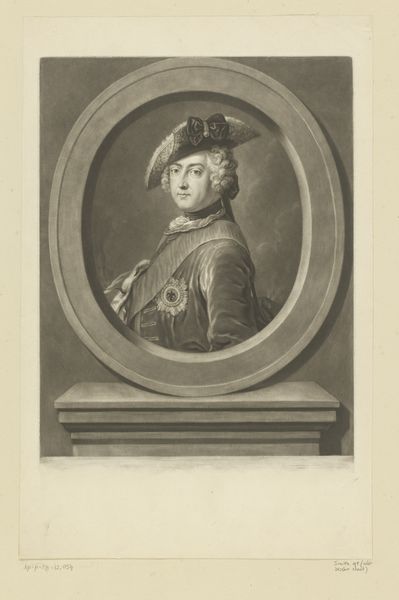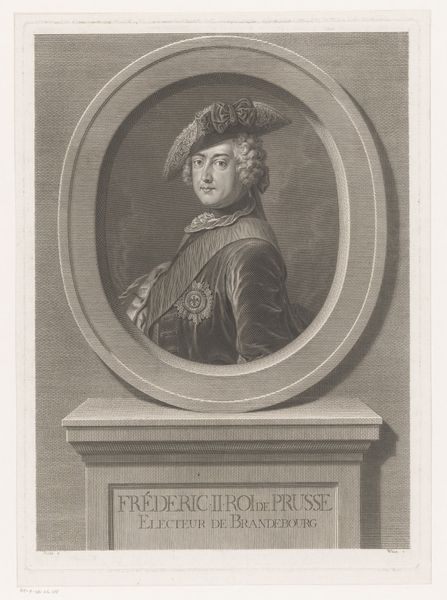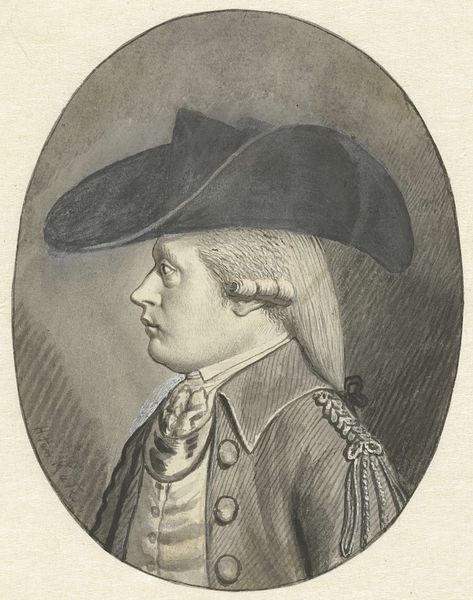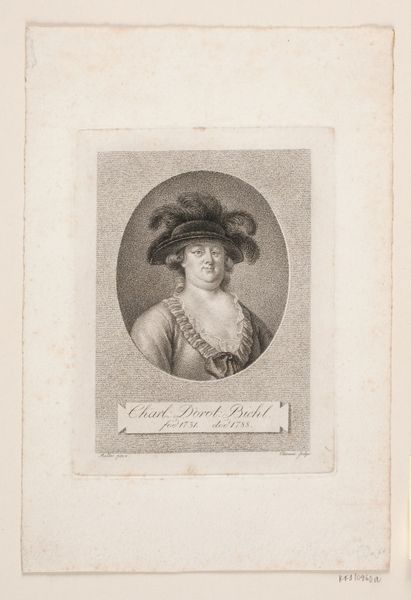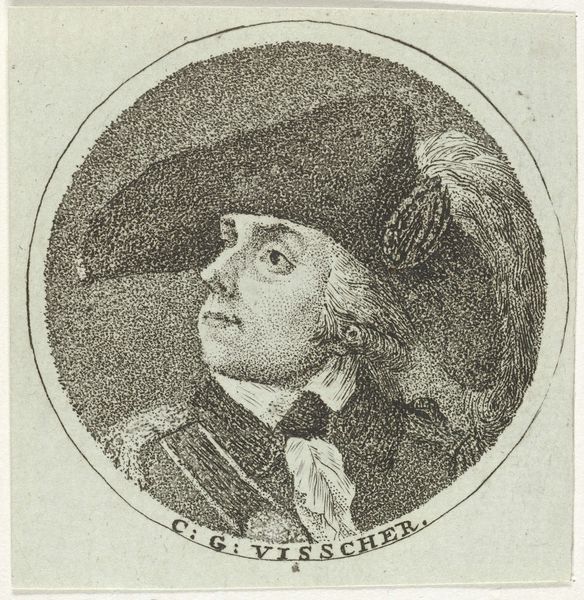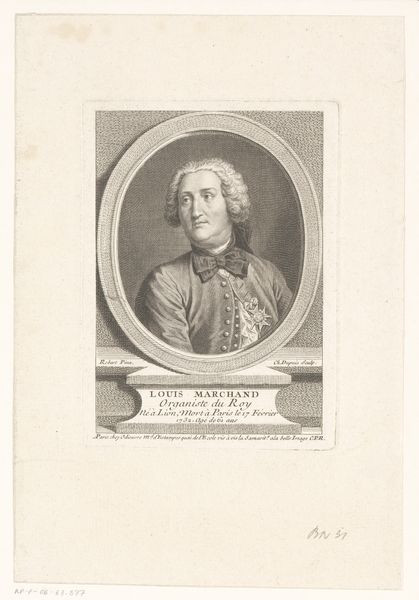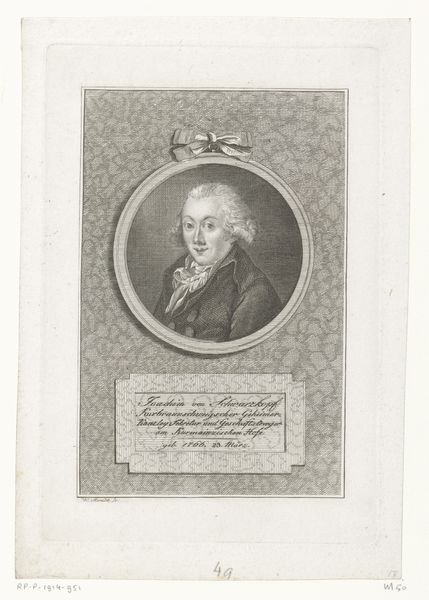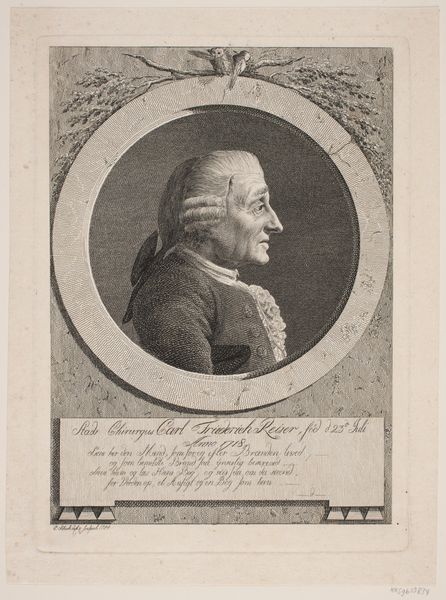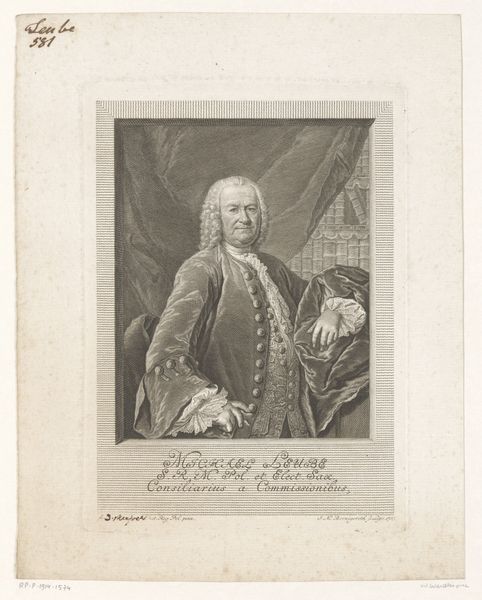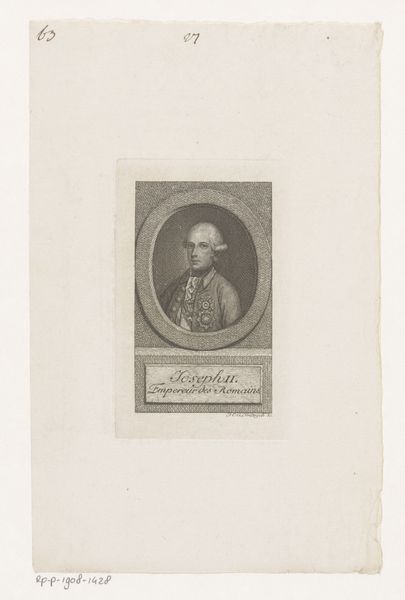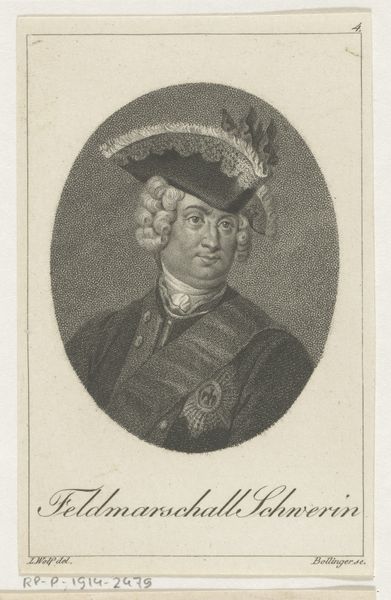
Portret van Friedrich Wilhelm Freiherr von Seydlitz 1769 - 1828
0:00
0:00
drawing, print, engraving
#
portrait
#
drawing
#
neoclacissism
# print
#
old engraving style
#
history-painting
#
engraving
Dimensions: height 109 mm, width 70 mm
Copyright: Rijks Museum: Open Domain
Editor: This is "Portret van Friedrich Wilhelm Freiherr von Seydlitz," made between 1769 and 1828 by Eberhard Siegfried Henne. It's an engraving and, although small, the detail is quite striking. I find the subject’s gaze intense and the overall style very formal. What do you see in this piece beyond just a historical portrait? Curator: Well, beyond the immediate formality, this print operates within a complex web of power, identity, and representation. Seydlitz, a celebrated military figure, is deliberately framed within the visual language of Neoclassicism, a style often deployed to legitimize authority. Consider, though, the politics of portraiture itself. Who gets represented and why? Who is *absent* from these historical records and why is that? Editor: That’s a really interesting point – this image only reinforces the perspective of a very particular group. Curator: Exactly. Engravings like these were a form of propaganda, disseminating a carefully constructed image of leadership. Look at the detail in his uniform – every button, every plume reinforces his status. And that gaze, as you mentioned, isn't just intense, it's carefully calculated to project dominance. But dominance for whom and at whose expense? This image demands that we ask questions about whose stories are told and whose are silenced in the historical narrative. What is deliberately present, and what narratives are absent? Editor: It’s almost as if the engraving is less about the person, and more about the idealized version of power the engraver wanted to convey. Curator: Precisely. By understanding the historical and social context, we can challenge the authority this image projects and engage with the complexities of its construction. Editor: I never considered that even in portraits like this, there is a dialogue being established on how people see identity. Thanks for offering a new insight into how context informs the reading of images. Curator: Absolutely. Questioning those contexts is key to unlocking the deeper meanings embedded within.
Comments
No comments
Be the first to comment and join the conversation on the ultimate creative platform.
